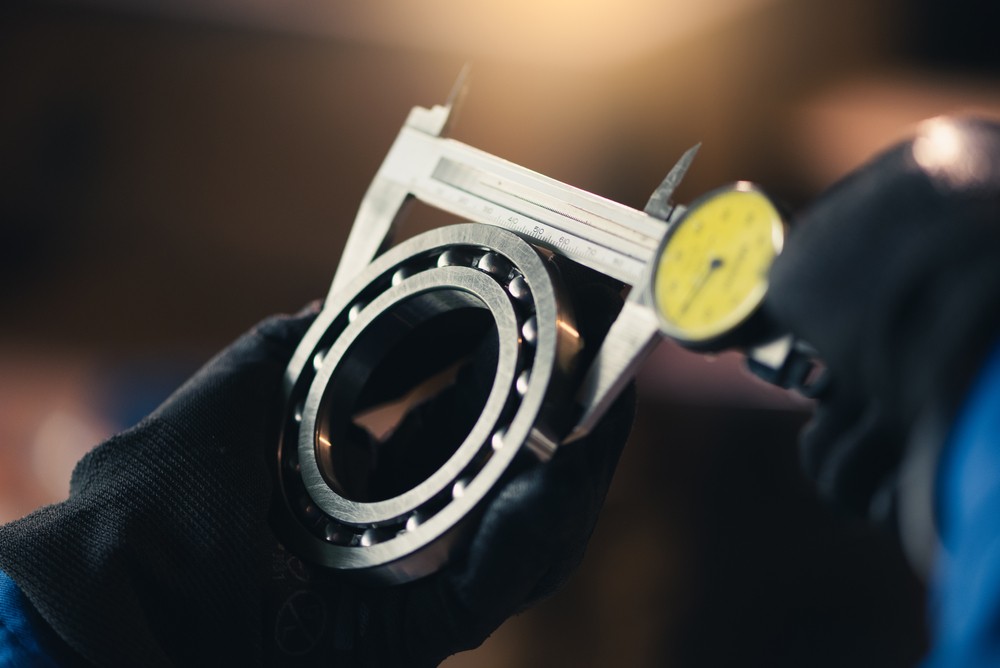Five Common Signs of Impending Bearing Failure

Bearing failures are tricky in the factory environment. Housed bearings are, in theory, sealed and protected against wear. But in reality, bearings can and do fail, and the cause isn’t always immediately evident or easy to discern. Grab your sound level meter, oscilloscope, infrared camera, and lubrication tools, and check your equipment for these five signs of impending bearing failure.
1. Contamination
Contamination is one common culprit in bearing failure, and it can contribute to a host of equipment problems. Friction and other performance issues are symptoms of bearing contamination. Contaminated bearings are prone to excessive heat, noise, and vibration. Causes include dirt, abrasive grit, steel chips, and common dust.
To guard against contamination, keep work areas clean, store dirty tools and fixtures, and be cautious during service to avoid sealing debris into the bearing housing.
2. Noise
Excessive noise is another common symptom of bearing friction. Sounds like clicking, squealing, and squeaking typically signal a lack of proper lubrication. Strange sounds from your equipment merit immediate investigation. Loud or persistent tones are often signs of vibration, and vibration destroys bearings. Unusual noise may also indicate excessive radial load or warped bearings in need of replacement.

3. Temperature
Friction causes heat, and high temperatures often result in bearing failure. Lubricated equipment should operate at a temperature below 180 degrees Fahrenheit. But temperatures higher than 150 F can cause bearing lubricant to deteriorate quickly. Take caution if operating temperatures rise above 180 F. Temperatures exceeding 250 F are cause for alarm, and equipment operating at temperatures of more than 300 F should be immediately shut down.
4. Vibration
Many bearing problems stem from vibration. Contamination is a major catalyst for vibration, but improper lubrication and installation are also frequent culprits. Manufacturers can use vibration analysis to measure frequencies produced by bearings and identify when they’re close to failing. Oil analysis, ultrasonics, and thermography are other methods for evaluating bearing condition. Remounting bearings will sometimes fix vibration problems, and it’s best to make sure vibration can’t be attributed to another problem, such as soft foot.
5. Lubrication
Proper lubrication is the best protection for bearings. Invest in the right lubricant, apply it regularly, and regulate operating temperatures. Regularly replacing lubricant is essential to prevent breakdowns and buildups.

Maintenance prevents most problems
It all comes down to proper bearing maintenance. With the right maintenance model, bearings should — in theory — last forever. In practice, we know this is impossible. But aiming for an ideal maintenance schedule keeps bearings running as efficiently as possible for as long as possible.
